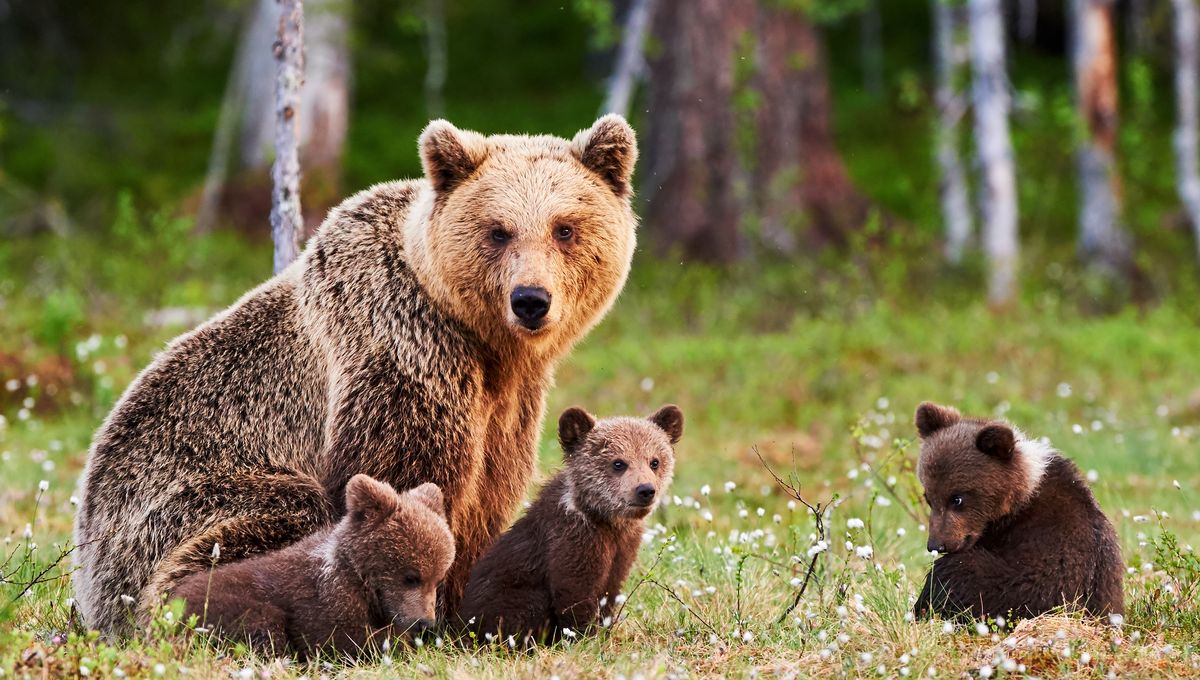
What’s the most ironic and tragic thing about the bear on the Californian flag and the state’s seal? The fact that there have not been any wild grizzly bears in the state for just over 100 years. However, the California Grizzly Alliance has released a new peer-reviewed study showing that there are no insurmountable biological, ecological, economic, legal, or policy problems preventing their reintroduction.
The last time a grizzly bear (Ursus arctos horribilis) was reliably spotted in the Californian wildlands was in the spring of 1924, in Sequoia National Park. Prior to this, at the time of the Gold Rush in the late 1840s, there were estimated to be 10,000 grizzlies in the state. However, after years of persecution and habitat loss, they were eventually eradicated around two thirds of a century later.
Despite their enormity, grizzly bears are considered to be threatened in the contiguous United States and endangered in parts of Canada. According to the US Fish and Wildlife Service, there are currently around 1,923 bears living in the 48 contiguous states, 727 of which are in the Greater Yellowstone area. All these animals are currently protected species, so it is illegal to harm them, harass them, or kill them, unless it is explicitly for self defense or the defense of others.
But despite this protection, their numbers remain greatly diminished, at around 4 percent of what they were before Europeans colonized the country.
At present, the existing recovery program, despite its intentions and successes, does not ensure the long-term survival of these bears, nor is it designed or equipped to see meaningful recovery south of the Canadian border. Without greater ambition in recovery programs, the vision of a future for American grizzly bears remains unclear.
This is why the California Grizzly Alliance undertook this feasibility study.
“This feasibility study builds on nearly a decade of research conducted through the California Grizzly Research Network and California Grizzly Alliance,” the authors write in their 200-page report.
“Much remains to be done. At each stage along the way, however, the lessons we learned pointed to a clear and consistent conclusion: California (the place) likely contains plenty of habitat for a sustainable population of grizzly bears. The question is whether Californians (the people) will embrace such a bold and visionary project.”
The study itself, produced by scientists and policy experts led by Dr Peter Alagona, of the University of California, Santa Barbara, offers a deep dive into the California grizzly’s history in the state, its biology, ecology, and its relationship with humans. It also examines suitable habitats that are already in the state, as well as the probably ecological, economic, and social impacts that could come from their reintroduction.
Although the bears have been absent from California for the last hundred years, they continue to hold an important cultural significance. Not only do they appear on various objects, like the state’s flag, or as a university mascot, they are also revered among Californian Tribes.
“It’s important for people to realize that the grizzly bear isn’t just a symbol on a flag – it was a real animal that shaped California’s ecosystems and holds deep meaning for Tribal Nations across the state,” Tejon Tribe Chairman Octavio Escobedo III explained in a statement.
“The grizzly was honored and respected not only for its power, but for the balance it helped maintain in the natural world. This study shows that with the right approach, it’s actually possible for the bear to fulfill that role once again.”
The study identifies three potential regions where the bears could live in the state. They include the Transverse Ranges, which extend from the coast to the desert in Southern California; the Sierra Nevada mountain range, especially the high-quality habitats in the southern Sierra; and the Northwest Forests, including the Klamath Mountains, Trinity Alps, and similar ranges in the northwest quarter of the state.
According to polling published by the California Grizzly Research Network in 2019, around two-thirds of people in the state support the return of these bears, and only 14 percent oppose it.
“Whether or not we bring grizzly bears back to California is a choice, as there is no biological reason we couldn’t do it,” said Alagona. “A decade of research informing this study demonstrates that grizzlies likely can thrive in California if we make the affirmative decision to bring them back.”
The feasibility study is accessible here.
Source Link: After A 100-Year Absence, Grizzly Bears Could Be Reintroduced To California. Here's How